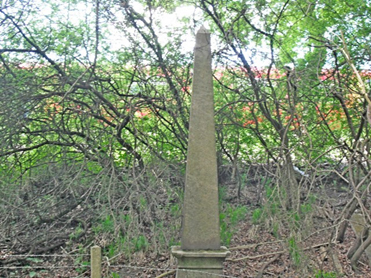Coal Posts (3)

Although coal posts were constructed from cast iron, a material chosen for its robustness and durability, there were still bumps and scrapes and the polluted air meant that the white paint soon discoloured. James Browton, a builder and general contractor from Watford, was given the contract for repairing and repainting all the boundary markers from 1863 until his death in 1870 when the contract passed to Dudley Browton. An 1887 tender from James Dudley Brownton to clean, repair, and paint once in oil paint and number consecutively 257 boundary marks for a year for £185 suggests that coal post maintenance was very much a Browton family affair.
By 1890 there were around 265 coal posts marking the boundary of which, according to a fascinating website, there are still 211 extant (or there were in 2011) with Elmbridge being a particular hot spot with twenty-three publicly accessible surviving, most of which are Grade II listed.
The monies raised from the coal duty went towards very specific purposes such as the creation of a unified sewerage system for London and the construction of the Thames embankments. Other major landmarks such as Cannon Street and Holborn Viaduct were financed from the City of London’s share of the duties. In the 1870s the funds were used to eliminate toll charges on bridges over the Thames at Kew, Kingston upon Thames, Hampton Court, Walton upon Thames, and Staines and across the Lea at Chingford and Tottenham Mills.
However, by the 1880s there was increasing public and political pressure to reduce or eliminate taxes on specific everyday items such as coal. The coal tax was seen as disproportionately affecting the poor as they relied on the fuel for heating and cooking. There was also a concern that the duty was being used for the aggrandizement of the centre of the metropolis at the expense of its growing suburbs. Coupled with a move to simplify and streamline the tax collection process, it was clear that the days of the coal tax were numbered.
The creation of the London County Council in 1889 and, later, the Greater London Council led to changes in the way that infrastructure projects were funded, meaning that there was no need for specific taxes like the coal tax. Coal duties were formally abolished initially within the City of London in 1890 and by 1901 across the whole of the London area. Within three or four decades of their erection, the distinctive white metal posts and stone obelisks had become redundant and, over time, their purpose almost forgotten.



